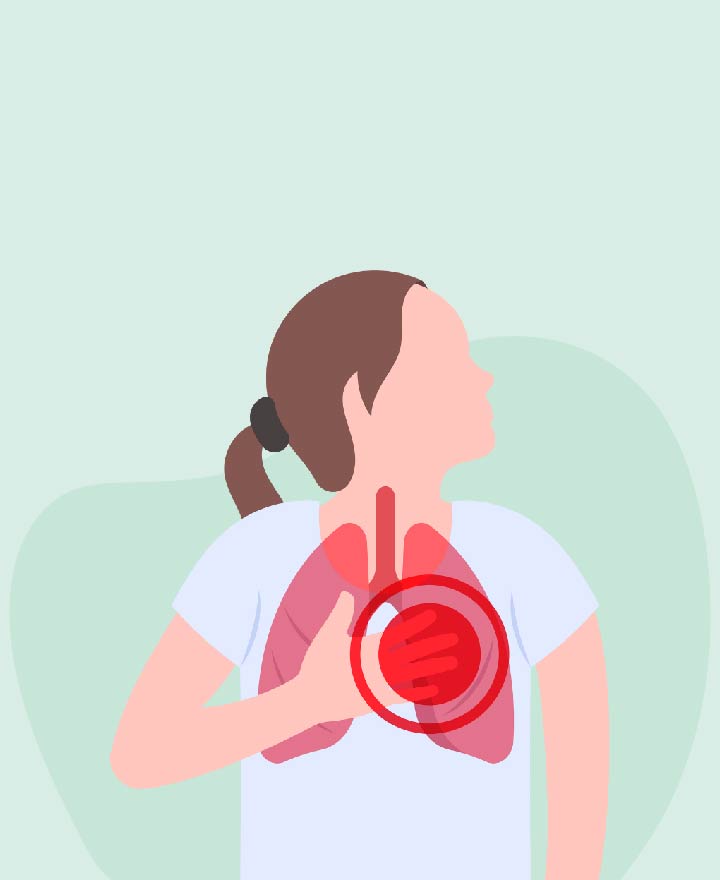

How to detect Signs of COPD and what are its Causes?
Chronic obstructive pulmonary disease (COPD) is a chronic inflammatory lung disease that causes obstructed airflow from the lungs. Chronic obstructive pulmonary disease is quite common among individuals and often remains undiagnosed. Emphysema and chronic bronchitis are the two most common conditions that contribute to COPD. They usually occur together and can vary in severity among individuals with COPD. Take a look at this article to know about common COPD symptoms, causes and risk factors.
Symptoms
COPD symptoms often don't appear until significant lung damage has occurred, and they usually worsen over time, particularly if smoking exposure continues. Signs and symptoms of COPD may include:
• Shortness of breath, especially during physical activities
• Wheezing
• Chest tightness
• A chronic cough that may produce mucus (sputum) that may be clear, white, yellow or greenish
• Frequent respiratory infections
• Lack of energy
• Unintended weight loss (in later stages)
• Swelling in ankles, feet or legs
People with COPD are also likely to experience episodes called exacerbations, during which their symptoms become worse than the usual day-to-day variation and persist for at least several days.
Causes
COPD is most likely to result from:
1. Cigarette smoke -
This is the most common reason people get COPD.
2. Passive smoking -
Even if you aren’t a smoker, you can get COPD with second hand smoking.
3. Pollution and fumes -
Breathing chemical fumes, dust, or toxic substances at work can also cause COPD.
4. Alpha-1-antitrypsin deficiency (AAT) -
AAT deficiency is the least common cause of COPD among individuals. It is a type of genetic disorder where alpha-1-antitrypsin levels in the body remain low and its deficiency can lead to lung disease, liver disease and, sometimes, both.
5. Asthma -
If left untreated, over time it can lead to COPD.
Risk Factors
Things that can make you more likely to get COPD include:
• Smoking
• Asthma
• People of age 40 years or older
• Certain jobs which results in prolonged exposure to air pollution
• Respiratory infections in childhood
Conclusion
COPD is an on-going lung disorder that makes it hard to breathe. There are a lot of preventive measures which can help to lower the risk of COPD and while it cannot be completely cured, there are various treatment options available, which can control its symptoms to a great extent.
One of the important components of our overall wellness is also being financially secured. Healthcare emergencies can happen any time, but a good health insurance can protect you from such uncertain situations. To know more about it, click here
Source: Mayoclinic, Healthline, Medical News Today
Disclaimer: This blog provides general information and discussions about health and related subjects. The information and other content provided in this blog, website or in any linked materials are not intended and should not be considered, or used as a substitute for, medical advice, diagnosis or treatment. Kindly contact your Doctor before starting a new medicine or health regime.
Related Articles
PTSD - risk factors and complications
What is CPR and how does it work?
Sudden Cardiac arrest - symptoms and causes
What you should know about lactose intolerance
Health consequences of iodine deficiency
Published on January 23, 2023

















 Health Insurance
Health Insurance  Travel Insurance
Travel Insurance  Car Insurance
Car Insurance  Cyber Insurance
Cyber Insurance  Critical Illness Insurance
Critical Illness Insurance
 Pet Insurance
Pet Insurance
 Bike/Two Wheeler Insurance
Bike/Two Wheeler Insurance  Home Insurance
Home Insurance  Third Party Vehicle Ins.
Third Party Vehicle Ins.  Tractor Insurance
Tractor Insurance  Goods Carrying Vehicle Ins.
Goods Carrying Vehicle Ins.  Passenger Carrying Vehicle Ins.
Passenger Carrying Vehicle Ins.  Compulsory Personal Accident Insurance
Compulsory Personal Accident Insurance  Travel Insurance
Travel Insurance  Rural
Rural